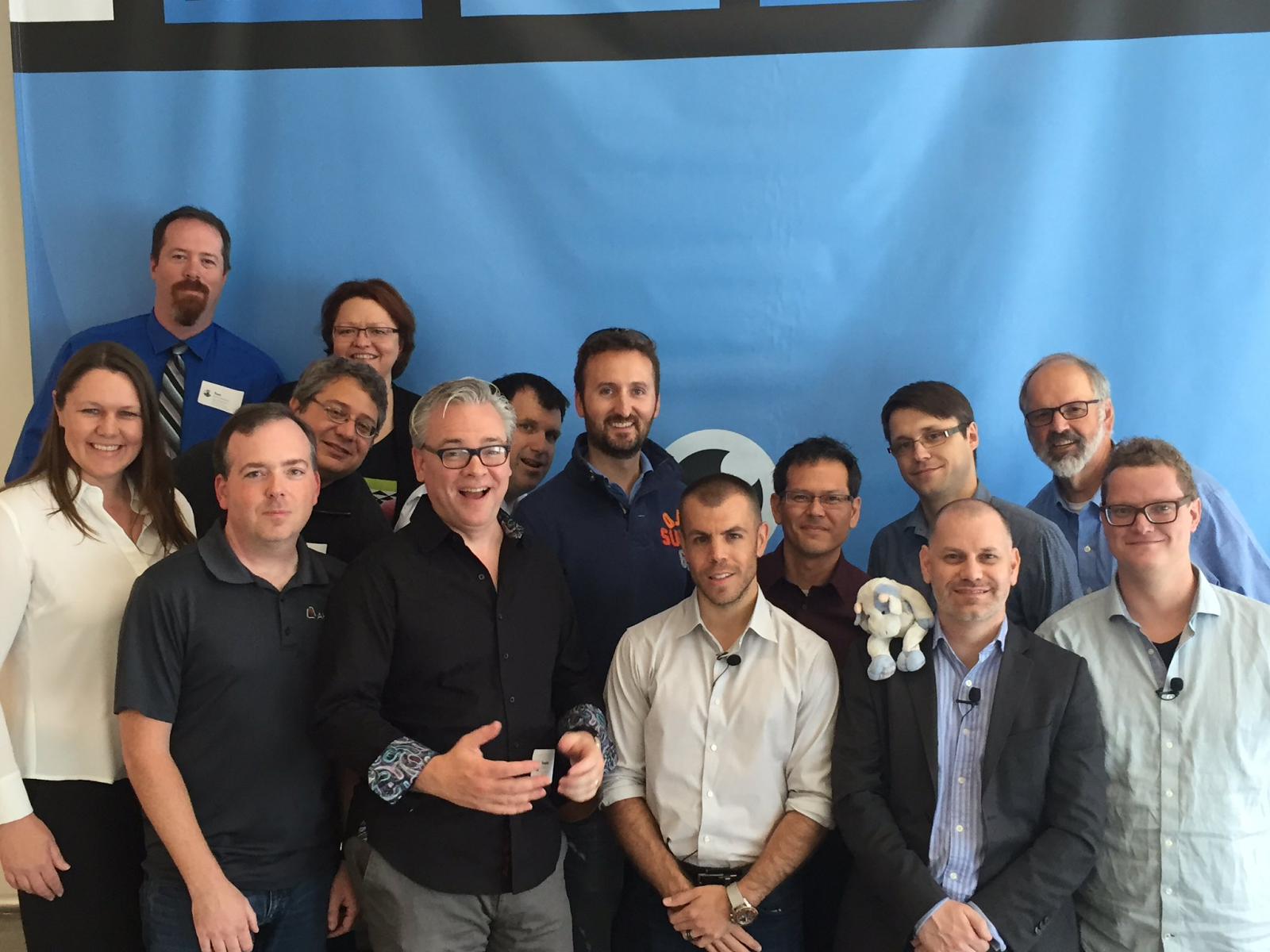Let’s meet in Barcelona at the OpenStack Summit!
The post Let’s meet in Barcelona at the OpenStack Summit! appeared first on Mirantis | The Pure Play OpenStack Company.
As we count down the days to the OpenStack Summit in Barcelona on October 24-28, we’re getting ready to share memorable experiences, knowledge, and fun!
Come to booth C27 to see what we’ve built with OpenStack, and join in an “Easter Egg Hunt” that will test your observational skills and knowledge of OpenStack, Containers, and Mirantis swag from prior summits. If you find enough Easter eggs, you&8217;re entered in our prize drawing for a $300 Visa gift card or an OpenStack certification exam from our OpenStack Training team ($400 value). And as always, we’re giving away more awesome swag you’ve come to expect from us.
If you&8217;d like to set up some time at the summit to talk with our team, simply contact us and we&8217;ll schedule a meeting.
REQUEST A MEETING
Free Training
Mirantis is also providing two FREE training courses based on our standard industry-leading curriculum. If you&8217;re interested in attending, please follow the links below to register:
Tuesday, October 25th: OpenStack Fundamentals
Wednesday, October 26th: Introduction to Kubernetes & Docker
Mirantis Presentations
Here&8217;s where you can find us during the summit….
TUESDAY OCTOBER 25
Tuesday, 12:15pm-12:55pm
Level: Intermediate
Chasing 1000 nodes scale
(Dina Belova and Alex Shaposhnikov, Mirantis; Inria)
Tuesday, 12:15pm-12:55pm
Level: Intermediate
OpenStack: you can take it to the bank!
(Ivan Krovyakov, Mirantis; Sberbank)
Tuesday, 3:05pm-3:45pm
Level: Intermediate
Live From Oslo
(Oleksii Zamiatin, Mirantis; EasyStack, Red Hat, HP)
Tuesday, 3:55pm-4:35pm
Level: Intermediate
Is your cloud forecast a bit foggy?
(Oleksii Zamiatin, Mirantis; EasyStack, Red Hat, HP)
Tuesday, 5:05pm-5:45pm
Level: Intermediate
Kerberos and Health Checks and Bare Metal, Oh My! Updates to OpenStack Sahara in Newton.
(Nikita Konovalov and Vitaly Gridnev, Mirantis; Red Hat)
WEDNESDAY OCTOBER 26
Wednesday, 11:25am-12:05pm
Level: Intermediate
The race conditions of Neutron L3 HA&8217;s scheduler under scale performance
(Ann Taraday and Kevin Benton, Mirantis; Red Hat)
Wednesday, 11:25am-12:05pm
Level: Advanced
The race conditions of Neutron L3 HA&8217;s scheduler under scale performance
(Florin Stingaciu and Shaun O&8217;Meara, Mirantis)
Wednesday, 12:15pm-12:55pm
Level: Beginner
The Good, Bad and Ugly: OpenStack Consumption Models
(Amar Kapadia, Mirantis; IDC, EMC, Canonical)
Wednesday, 12:15pm-12:55pm
Level: Intermediate
OpenStack Journey in Tieto Elastic Cloud
(Jakub Pavlík, Mirantis TCP Cloud; Tieto)
Wednesday, 2:15pm-3:45pm
Level: Intermediate
User Committee Session
(Hana Sulcova, Mirantis TCP Cloud; Comcast, Workday, MIT)
Wednesday, 3:55pm-4:35pm
Level: Beginner
Lessons from the Community: What I&8217;ve Learned As An OpenStack Day Organizer
(Hana Sulcova, Mirantis TCP Cloud; Tesora, GigaSpaces, CloudDon, Intel, Huawei)
Wednesday, 3:05pm-3:45pm
Level: Beginner
Glare – a unified binary repository for OpenStack
(Mike Fedosin and Kairat Kushaev, Mirantis)
Wednesday, 3:55pm-4:30pm
Level: Intermediate
OpenStack Requirements : What we are doing, what to expect and whats next
(Davanum Srinivas, Mirantis; RedHat)
Wednesday, 3:55pm-4:35pm
Level: Intermediate
Is OpenStack Neutron production ready for large scale deployments?
(Oleg Bondarev, Satish Salagame and Elena Ezhova, Mirantis)
Wednesday, 5:05pm-5:45pm
Level: Beginner
How Four Superusers Measure the Business Value of their OpenStack Cloud
(Kamesh Pemmaraju and Amar Kapadia, Mirantis)
THURSDAY OCTOBER 27
Thursday, 9:00am-9:40am
Level: Intermediate
Sleep Better at Night: OpenStack Cloud Auto-Healing
(Mykyta Gubenko and Alexander Sakhnov, Mirantis)
Thursday, 11:00am-11:40am
Level: Advanced
OpenStack on Kubernetes &8211; Lessons learned
(Sergey Lukjanova, Mirantis; Intel, CoreOS)
Thursday, 11:00am-11:40am
Level: Intermediate
Unified networking for VMs and containers for Openstack and k8s using Calico and OVS
(Vladimir Eremin, Mirantis; Intel)
Thursday, 11:50am-12:30pm
Level: Intermediate
Kubernetes SDN Performance and Architecture Evaluation at Scale
(Jakub Pavlík and Marek Celoud, Mirantis TCP Cloud)
Thursday, 3:30pm-4:10pm
Level: Advanced
Ironic Grenade: Blowing up our upgrades.
(Vasyl Saienko, Mirantis; Intel)
Thursday, 3:30pm-4:10pm
Level: Beginner
Application Catalogs: understanding Glare, Murano and Community App Catalog
(Alexander Tivelkov and Kirill Zaitsev, Mirantis)
Thursday, 5:30pm-6:10pm
Level: Beginner
What&8217;s new in OpenStack File Share Services (Manila)
(Gregory Elkinbard, Mirantis; NetApp)
The post Let’s meet in Barcelona at the OpenStack Summit! appeared first on Mirantis | The Pure Play OpenStack Company.
Quelle: Mirantis


